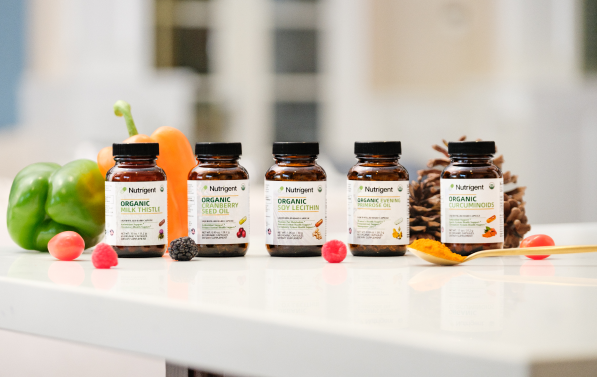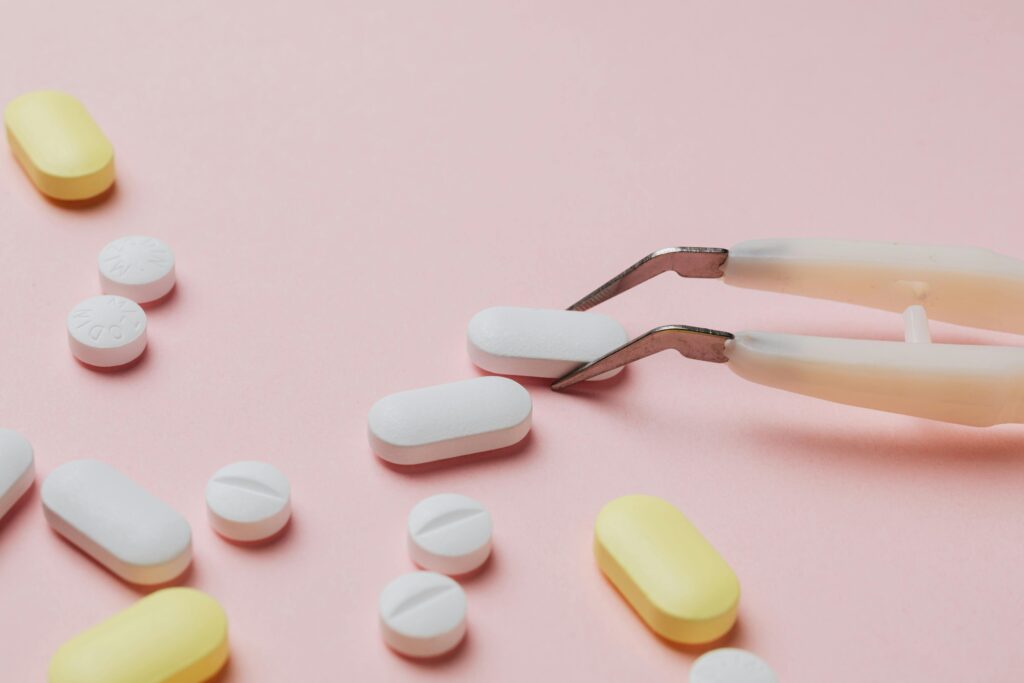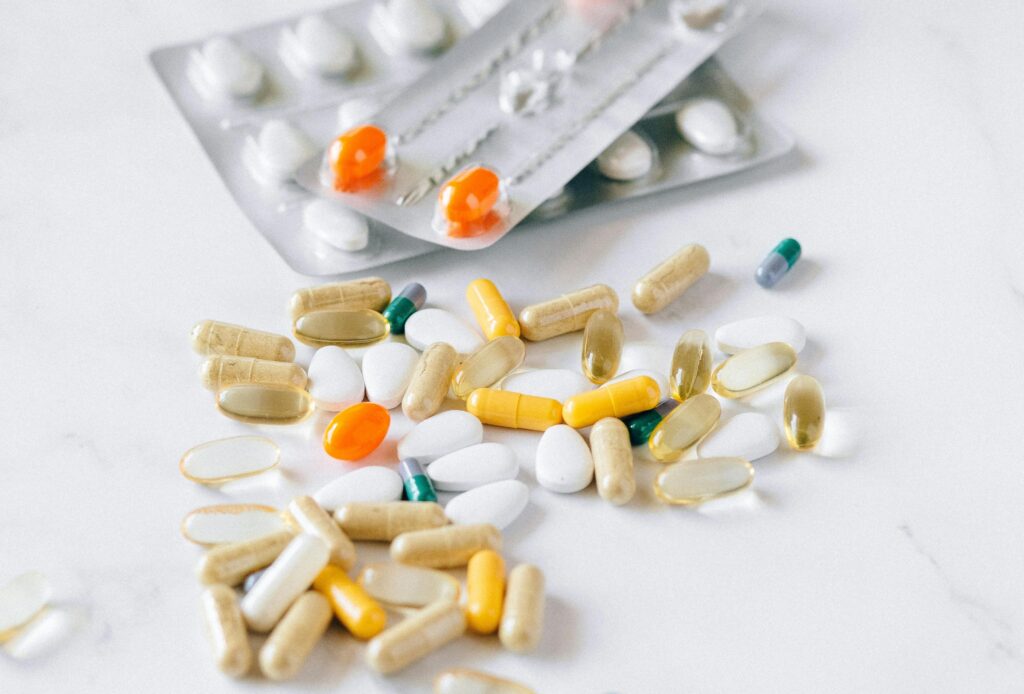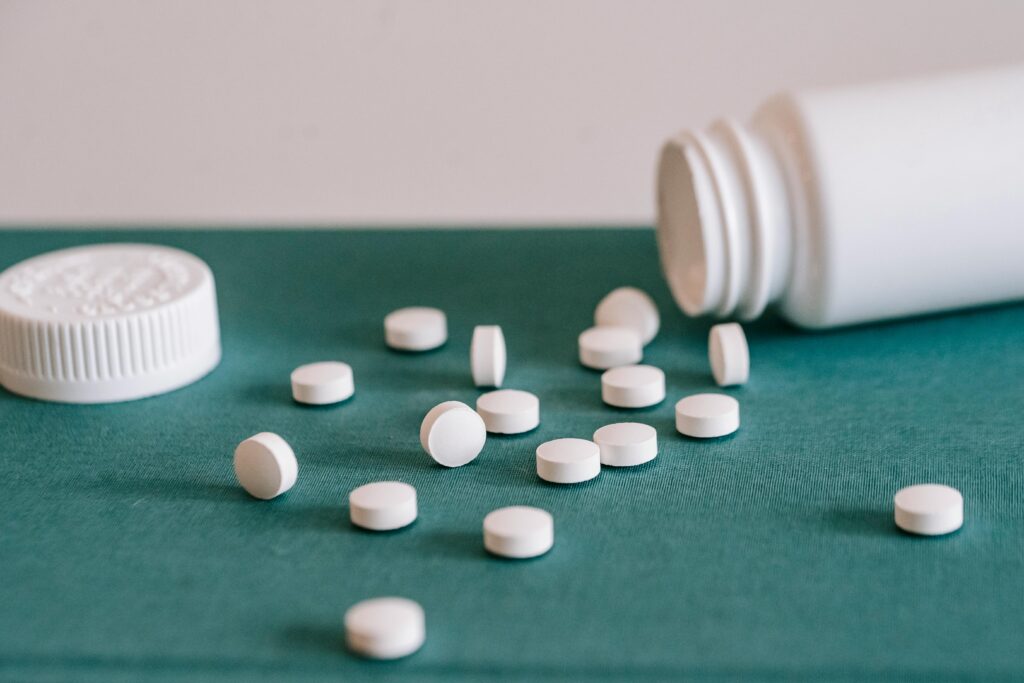Free Ship Over $75
15% OFF First Order
-
Shop
NEW & NEATURED
SHOP BY HEALTH BENEFITS
-
About Us
-
Shop
NEW & NEATURED
SHOP BY HEALTH BENEFITS

-
About Us
Free Ship Over $75
15% OFF First Order


Tablets are solid dosage forms made by uniformly mixing medicinal substances with excipients and then compressing them into round or specially shaped pieces. They can be categorized into various types, including conventional tablets, coated tablets, sustained-release tablets, controlled-release tablets, chewable tablets, and effervescent tablets. Tablets offer several advantages: good chemical stability, compact size, convenience in transportation and handling, a high degree of mechanization and automation in production, high output, low cost, and affordability. The tablet manufacturing process can be divided into several methods, including wet granulation, dry granulation, direct powder compression, and semi-dry granulation (blank granules).

Common excipients used in tablet formulations include:
Diluents (Fillers): Used to increase the volume of the tablet, making it easier to compress. Common examples include lactose, starch, and microcrystalline cellulose.
Binders: Enhance the cohesiveness of powder particles during granulation. Frequently used binders include hydroxypropyl methylcellulose (HPMC), polyvinylpyrrolidone (PVP), and starch paste. If the raw material has natural stickiness, substances like water or ethanol may be used to activate it — these are also called wetting agents.
Disintegrants: Promote the breakdown of the tablet in the gastrointestinal tract. Common disintegrants include sodium carboxymethyl starch (CMS-Na), croscarmellose sodium (CCNa), and low-substituted hydroxypropyl cellulose (L-HPC).
Glidants: Improve the flowability of granules. Colloidal silicon dioxide is a commonly used glidant.
Lubricants: Reduce friction and prevent sticking during tablet compression. Common lubricants include magnesium stearate and talc.
The core manufacturing process of tablets includes two major stages: granulation and compression. The choice of process depends on the characteristics of the active pharmaceutical ingredient (API). The three most commonly used processes are:
Wet granulation is the most widely used method for tablet production. The main steps include:
Milling and Sieving: The active ingredient and excipients are milled to a suitable particle size and sieved to ensure uniformity and prevent clumping.
Mixing and Granulation: The API, fillers, and part of the disintegrants are blended. A binder is then added to form wet granules using a swing granulator, high-shear granulator, or fluid bed granulator. These granules are dried (in a fluid bed dryer or oven) to a suitable moisture level.
Mixing: The dried granules are sieved (typically through a 16–20 mesh screen) to remove agglomerates. External disintegrants (e.g., CMS-Na) and lubricants (e.g., magnesium stearate) are added and mixed for 10–20 minutes.
Compression: The tablet press is adjusted to ensure proper pressure and fill volume, controlling weight variation within ±5%, and achieving appropriate hardness.
Coating: To enhance appearance, mask taste, provide moisture protection, or control drug release, core tablets may be coated with film coatings (e.g., HPMC) or sugar coatings.
Inspection: The tablets are checked for appearance, hardness, disintegration time, dissolution rate, and content uniformity to ensure quality standards are met.
Packaging: Tablets are packaged in aluminum-plastic blisters or sealed HDPE bottles, labeled with batch numbers and expiration dates.
Dry granulation is suitable for moisture- and heat-sensitive drugs (e.g., hydrolyzable compounds). Compared with wet granulation, the main difference lies in the granulation method. Common dry granulation techniques include:
Roller compaction: Powder is compressed into thin sheets under high pressure, then milled into granules.
Direct sieving: Suitable for crystalline drugs (e.g., sodium chloride), where granules are obtained through direct sieving.
Fusion method: Uses low-melting-point excipients (e.g., polyethylene glycol) to melt and bind powders.
Direct powder compression offers advantages such as simplified processing and no exposure to heat or moisture, making it ideal for heat-sensitive drugs. Unlike wet or dry granulation, this method skips the granulation step entirely. After blending, the powder can be directly compressed into tablets. This method is cost-effective and ensures consistent product quality, but it requires materials with excellent flowability and compressibility, which limits its applicability.

Tablets offer excellent chemical stability, small volume, and strong resistance to environmental factors such as air, light, humidity, and corrosion. They can also be coated for additional protection as needed. Tablets are easy to transport and carry, and their production is highly mechanized and automated, which results in high output, low cost, and affordability. However, when it comes to absorption, tablets must first undergo disintegration (breaking down into small particles) and dissolution (the drug dissolving in body fluids) before they can be absorbed by the body. Prior to these steps, the drug has limited contact surface area with the absorption site, resulting in slower absorption rates. In contrast, dosage forms with liquid content, such as softgels and liquid-filled hard capsules, already contain the drug in a dissolved state. These liquid forms can rapidly disperse in the gastrointestinal tract and provide a much larger surface area in contact with absorption sites (e.g., intestinal mucosa), thus allowing for faster absorption. Consequently, the bioavailability of tablets is often lower than that of liquid-containing dosage forms.
Tablet production typically involves minimal use of solvents. Wet granulation primarily uses purified water or low-toxicity solvents, while dry granulation and direct compression carry no risk of solvent residues. Tablets offer precise dosing, which minimizes the risk of overdose and enhances patient safety. They are also less prone to leakage or evaporation, reducing fire and explosion hazards during storage and transportation (unlike ethanol-based liquid formulations). However, processes such as milling, granulation, and drying can generate dust, posing potential environmental pollution and occupational health risks. Therefore, dust control measures must be implemented during manufacturing to protect both the environment and personnel.
Tablet formulations require a variety of excipients — diluents (fillers), binders, disintegrants, glidants, lubricants, most of which are synthetic substances. It is difficult to find alternatives that are entirely natural or organic, making it challenging to produce tablets that meet organic product standards. In contrast, liquid-filled hard capsules typically require far fewer excipients. For example, organic evening primrose oil capsules can be filled with 100% pure oil without any added excipients, making this form far more feasible for producing natural or organic products.

Tablets commonly contain excipients such as diluents (fillers), binders, disintegrants, glidants, and lubricants. Manufacturing techniques include wet granulation, dry granulation, and direct powder compression. The general process involves milling and sieving, granulation, mixing, compression, coating, inspection, and packaging. Tablets are characterized by good chemical stability, compact size, convenient transport and handling, high production efficiency, low cost, and affordability. However, in terms of absorption rate and bioavailability, tablets are generally inferior to dosage forms with liquid contents, such as softgels and liquid-filled capsules. Additionally, due to the variety of excipients used, it is more difficult to formulate tablets as natural or organic products, unlike liquid capsules which can sometimes use no excipients at all. Lastly, from an EHS perspective, dust generation during tablet production requires proper control measures to prevent environmental contamination and health risks to workers.
Customer Support: If you have any questions or need assistance, please contact our customer service team info@nutrigent.us. Our service hours are Monday to Friday, 9:00 AM to 5:00 PM.
DISCLAIMER: *These statements and any claims made about specific products on or through this site have not been evaluated by the Food and Drug Administration and are not intended to diagnose, treat, cure, or prevent any disease. This site is not intended to provide diagnosis, treatment, or medical advice, and all content provided is for informational purposes only.*